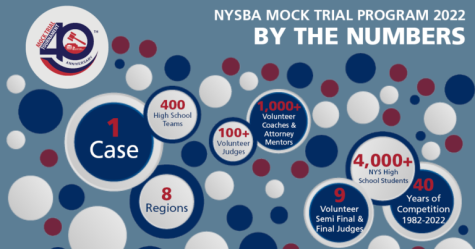A Brief History of Life
September 18, 2017
When I was a kid I was a huge fan of paleontology and prehistory, however as I got older my passion for it lessened. Recently though, I’ve been researching more and more about this topic and realized that there was a lot I didn’t know, which reignited my passion. This article is largely based on the Internet and YouTube digging I’ve been doing these past few weeks, and I hope you find it just as fascinating as I do.
4.5 Billion- 4 Billion Years Ago: Hadean Eon
4.546 billion years ago the Earth was formed from a cloud of gas, dust, and rock spinning around our new sun, however not all was well for young Earth. In its infant stages most of Earth was molten and it was constantly being bombarded by asteroids, giving this era the name the Late Heavy Bombardment. About 4.51 billion years ago another planet (Theia) about the size of Mars crashed into the early earth, increasing our size and shooting rocks and dust into our orbit, which eventually coalesced into our moon. The late heavy bombardment ended about 4 billion years ago and the Earth began to cool, creating a thin crust and the first chance for life to begin.
4 Billion- 2.5 Billion Years Ago: Archean Eon
The Earth has now cooled enough to have permanent solid crust, which now allows water to pool on the surface. The first water appeared at least 3.8 billion years ago, which is about the same time we believed life first appeared. This life was all single-cellular, and lacked much diversity. All life was in the ocean, where it could grow and evolve over time. Earth days were much longer than today, likely 30 hours and the moon was MUCH bigger in the sky.
2.5 Billion- 550 Million Years Ago: Protozoic Eon
During this time life began to use photosynthesis to produce energy. This led to the side effect of increased oxygen in the atmosphere. This oxygen compiled in the upper atmosphere, creating the ozone layer. Prior to this, radiation from the sun made life above the waves impossible, but now life could move above the waves. The first such life to do this and the most successful organism from this time period was the stromatolite. It functioned similar to today’s coral, with generation upon generations of bacteria piling up onto each other into a mushroom shaped mound. The bacteria on this mound could reach above the waves and take in more energy from the sun. While most of these have died out by now, they can still be found on Australia’s southern shores. The first multi-celled organisms also came about during this time period, creating the first animals and protists, although these were very simple, like proto-jellyfish. The climate had some interesting changes during this time too. The Earth likely froze over, pole to pole, twice during the protozoic and was only unfrozen by increased volcanic activity.
550 Million- Present day: Phanerozoic Eon
550 Million- 255 Million Years Ago: Paleozoic Era
550 Million- 485 Million Years Ago: Cambrian Period
The first plants came into being during this era along with the first sponges and official jellyfish. The first fish, Haikouichthys, came into being. It was also the first vertebrate, meaning it is the common ancestor of me, you, and all reptiles, mammals, birds, amphibians, and fish. Eyes were first evolved during this era, allowing predation for the first time. The world’s first major predator was the anomalocaridid, an arthropod that looked like a giant shrimp. (Arthropods are creatures with an exoskeleton and no bones. This includes modern spiders, insects, and scorpions.) All of this was part of the Cambrian Explosion, a massive increase of diversity during this time period.
485 Million- 445 Million Years Ago: Ordivician Period
We finally leave the ocean and step onto land! But just not us….. arthropods! During this time period sea-scorpions evolved, ranging in length from a few inches to 10 feet across. The smaller of these were the first organisms to leave the water and go onto land, although they did have to stay by the shore and forage on the carcasses that could wash up. Primitive plants also spread to the shore, with the first stems that reach up towards the sun. Fish evolved to bigger sizes and began to eat other fish and animals. Sponges evolved during this era too. The first long-term memory evolved during this time in fish, which allowed them to migrate long distances, usually to breed. This period’s major predator was the Cameroceras, an octopus-looking organism with a long, pointy shell that could grow up to 30 feet long! Finally, trilobites evolved during this time period and spread far and wide, becoming the poster-child of marine fossils we know and love today!
445 Million- 420 Million Years Ago: Silurian Period
During this period fish begin to evolve more complex skeletal systems and bony jaws and armor, although this would become more widespread later. The first fish begin to evolve primitive lungs to spend brief periods of time on land, although they weren’t amphibians yet. Sea scorpions would often spend short periods of time on land to molt or scavenge.
420 Million- 370 Million Years Ago: Devonian Period
This is the time period where the world becomes somewhat recognizable to us today. Forests now cover many parts of the earth, although the trees and shrubs aren’t as complex as today. Sharks evolve, and become a major player in the Earth’s oceans. But even they were prey to the armored fish of the day, which could grow up to 20 feet long, such as Dunkleosteus, the world’s biggest armored placoderm (a type of fish). On land, amphibians begin to eat the trees and other plants, as well as sea scorpions, which have mostly shrunk or disappeared by this point. However, they still needed to go to the water to reproduce, which hinders them. Their eggs died out in the sun, which killed their young. This will be remedied in the next period, however. At the end of this time period many tropical marine species died out, due to sudden warming and cooling of the oceans.
370 Million- 300 Million Years Ago: Carboniferous Period
This is the beginning of reptiles. Amphibians finally evolved a hard shell around their eggs, which kept the water and baby inside. This allowed them to finally leave the ocean once and for all. The forests from the Devonian continued to grow, covering most of the Earth and pumping the atmosphere with oxygen. Remember those sea scorpions? Well by this point they’ve evolved into 2 separate families, insects and arachnids. With so much oxygen in the atmosphere, these organisms were allowed to grow to tremendous sizes, such as the Meganeura, a dragonfly that could grow to have over a 2 foot wingspan, or Arthropleura, a centipede that could reach lengths of over 8 feet! Arachnids weren’t left out either. Mesothelae was a spider-like creature that could grow up to the size of a human head (not including its legs) and could hunt things as big as a modern day house cat. However, by the end of this era volcanic activity and additional land animals have lowered oxygen levels which shrank many of the giant insects of this period.
300 Million- 250 Million Years Ago: Permian Period
During this time period, reptiles became the world’s leading organism. They controlled the land and primitive sea reptiles were just evolving. This is also where our family, mammals, begins. Over time, reptiles began converging into two groups, the reptiles we know today and mammal-like reptiles, which, to everyone’s surprise, evolved into today’s mammals. Animals like the Dimetrodon, the reptile with a sail on its back that most people think is a dinosaur, fit into this category. Primitive ammonites evolved and dinosaur’s earliest ancestors, the archosaurs, came onto the scene. Early turtles and crocodiles also evolved. However, all this would end abruptly with the Permian extinction, which killed 90% of all species on Earth! To put this into perspective, the meteor that wiped out the dinosaurs only killed 60% of all species. Archosaurs would use this opportunity to spread all across the world, crossing Pangaea to do it.
250 Million – 65 Million Years Ago: Mesozoic Era
I’m assuming most of you already know a lot about the dinosaurs, so I’m compressing the Triassic, Jurassic, and Cretaceous for your convenience. Dinosaurs ruled the land during this time. Pterosaurs ruled the skies and reptiles such as the Ichthyosaurs and Mosasaurs ruled the ocean. Mammals fully came into being during the Triassic, but mostly stayed small scavengers until after the Cretaceous. Birds evolved from winged-theropods during the Jurassic and by the Cretaceous have all but replaced Pterosaurs in the sky. Flowering plants evolved and the Atlantic Ocean formed as the Americas moved away from Eurasia. By the end of the Cretaceous the world looks mostly like it does today. This whole era ends, as you all know, with an asteroid impact wiping out almost all of the dinosaurs and 60% of all life. (Although the dinosaurs were already disappearing due to high volcanic activity and other environmental factors.)
65 Million Years Ago- Present: Cenozoic Era
65 Million- 23 Million Years Ago: Paleogene Period
As the world recovered from the massive asteroid impact, it warmed, spreading tropical rainforests across the world. In these, giant birds, up to 8 feet tall, stalked mammals for their breakfast. However, as the Earth cooled and the rainforests receded, these birds died out everywhere except South America. Amphibian-like mammals evolved into primitive whales during this time period and many mammal groups such as primates, canines, felines, equines and bats evolved. While it was previously believed that grass evolved during this time, recent evidence has shown that it may have been much earlier.
23 Million- 3 Million Years Ago: Neogene Period
The Earth continued to cool and its poles grew in size. North and South America reconnected, forming the Isthmus of Panama. The famous Megaladon shark lived during this time, and the world began to look like it does today. Many of today’s modern mammal families and genera came to be during this time, including elephants, giraffes, canines, apes, felines, and bats. The Ice Age began at the tail-end of this period, along with the first human-like primates, including Australopithecus, the first apes to walk on 2 legs.
3 Million- 12,000 Years Ago: Quaternary Period
The Ice Age happened, although it wasn’t actually just one thing. It was a series of warming and cooling cycles, each lasting a few thousand years. Mammals become very big during this time, evolving into things like the Woolly Mammoth, Mastodon, Woolly Rhino, and of course, the saber-toothed cat. These cats actually moved down from North America into South America, meeting the terror birds mentioned in the Paleogene Period. However, due to the changing climate and humans spreading across the world, most of these massive animals died out around 10,00 years ago, although mammoths survived until the time of the Egyptians on a remote Siberian island. Our ancestors evolved into many forms including the Homo Erectus, which was the first of our ancestors to leave Africa and spread as far as England and Indonesia. Neanderthals evolved later and spread into Europe and Asia, gradually replacing Homo Erectus. We do not directly evolve from either of these, although we are very close cousins. Humans evolved in Eastern Africa around what is today Ethiopia around 200,000 years ago and gradually spread across Africa before jumping to Asia and Europe.
12,000 Years Ago- Present: Holocene Epoch
This time period literally means “Human Era” and is named well, as humans are the stars of this period. We jump to the Americas across the Bering Straight and possibly by boat from Europe or Polynesia at the beginning of this time period, and our arrival kills off most of the massive mammals that thrived in the Quaternary. We also spread to Australia just as the massive lizard Megalania went extinct. Humans begin to use agriculture and domesticate animals during this period, develop complex language and writing, and make complex civilizations, starting with Sumer 8,000 years ago and soon followed by China, Egypt, India, and South America. Humans develop technology like compasses, guns, and the printing press and in 1492 were all finally linked together with Columbus “discovering” America. Technology progressed, governments formed and fell, and we arrive at today. You, this article, and everything you see around you are the product of 4 billion years of evolution, survival, and a little bit of luck. Isn’t that amazing? That’s why I love history and I hope you have a bit more understanding as to why its so interesting.











